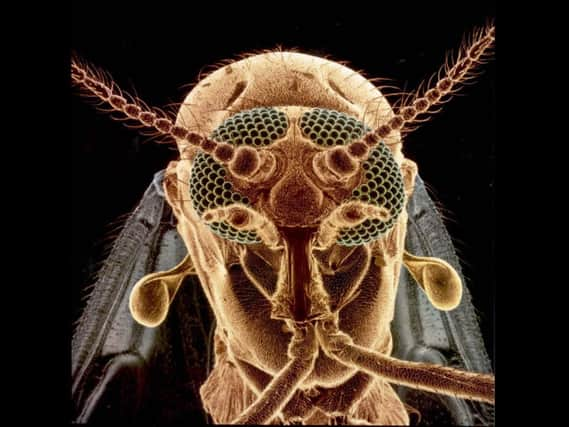2014 the year of the midge and 2015 could be worse


Alison Blackwell, director of Edinburgh-based Advanced Pest Solutions, claims numbers are significantly higher this year compared to last year. And she said these newcomers will lay even more eggs, resulting in a further increase in 2015.
The organisation operates specialist traps which monitor numbers of the insects.
Advertisement
Hide AdAdvertisement
Hide AdAt Gairloch, in Wester Ross, catches were up from 1,388,608 last summer to 3,912,064 – an increase of 182 per cent.
At Crarae, in Argyll, the number of midges caught rose from 3,555,969 in 2013 to 6,780,800 this year – an increase of 91 per cent.
In Scotland, midges spend the late autumn and winter as larvae, living below the soil surface. They begin to emerge as adult midges in May and June.
These adults lay eggs that develop relatively quickly to give a second emergence of adult midges in late July and August.
A prolonged spell of warm, damp weather in August can lead to a third hatch in September.
Ms Blackwell said: “Our catches are really low now, but we are still catching a few and people are still reporting that they are being bitten, so we must have had three generations this year.
“We’ve had much higher numbers nearly everywhere this summer due to warm, wet weather coming just at the right time.
“It has been so dry over the last few weeks that the numbers have dropped off quite significantly, but we should have a big over-wintering population.”
Advertisement
Hide AdAdvertisement
Hide AdShe added that winter weather conditions would not have much of an impact on the size of the first hatch as the larvae are “pretty resilient” to low temperatures.
She said: “Much more important will be the weather at the start of next year’s midge season. Warm, wet weather in the spring will maximise the first emergence.”
Ms Blackwell added that the Gairloch trapping station was the only location in Scotland still catching midges.
The Scottish Midge Forecast has been running for ten years. It ranks midge levels from negligible to nuisance, on a scale of one to five – five being the worst – around Scotland, with a five-day forecast predicting midge levels.
Currently, most of Scotland is suffering “negligible” levels of annoyance, but Torridon in the Highlands still has a “nuisance” rating.
Midges are tiny insects with a wingspan of 1-2mm. They suck blood from the skin, causing itching and swelling.